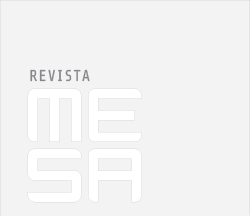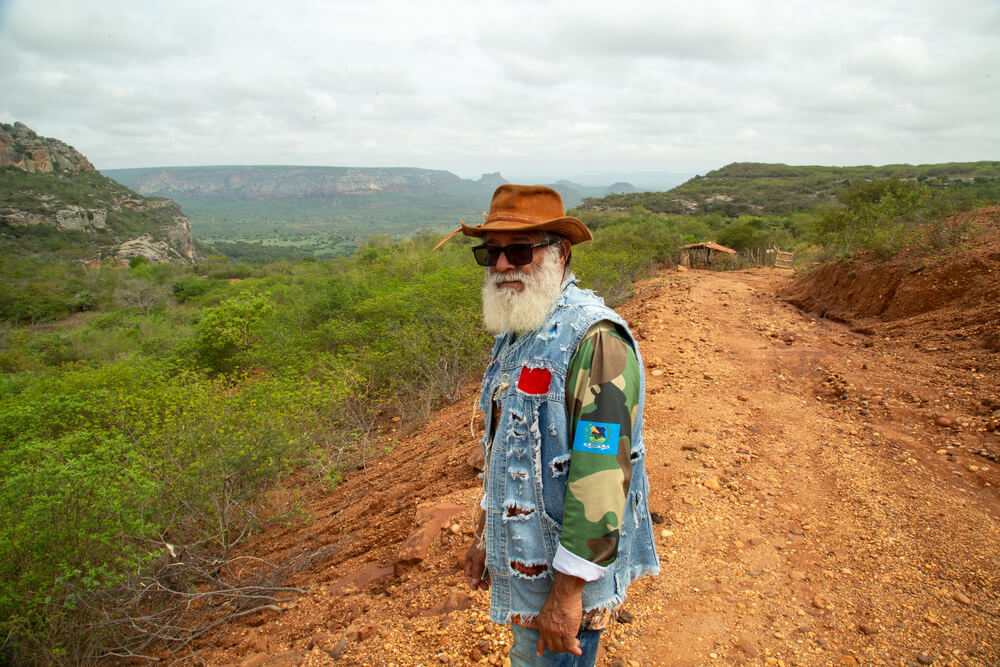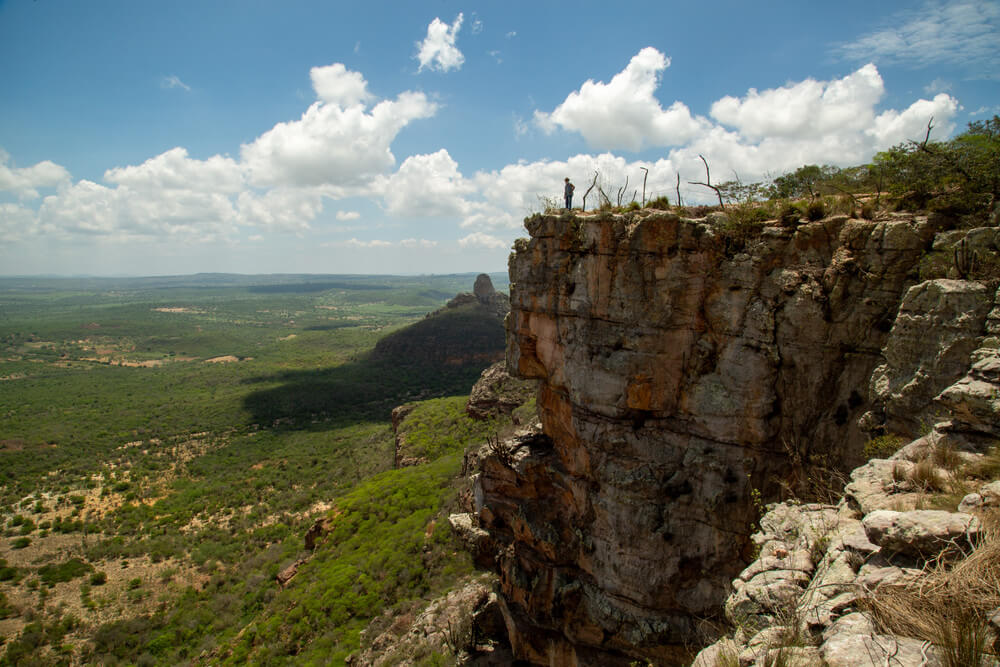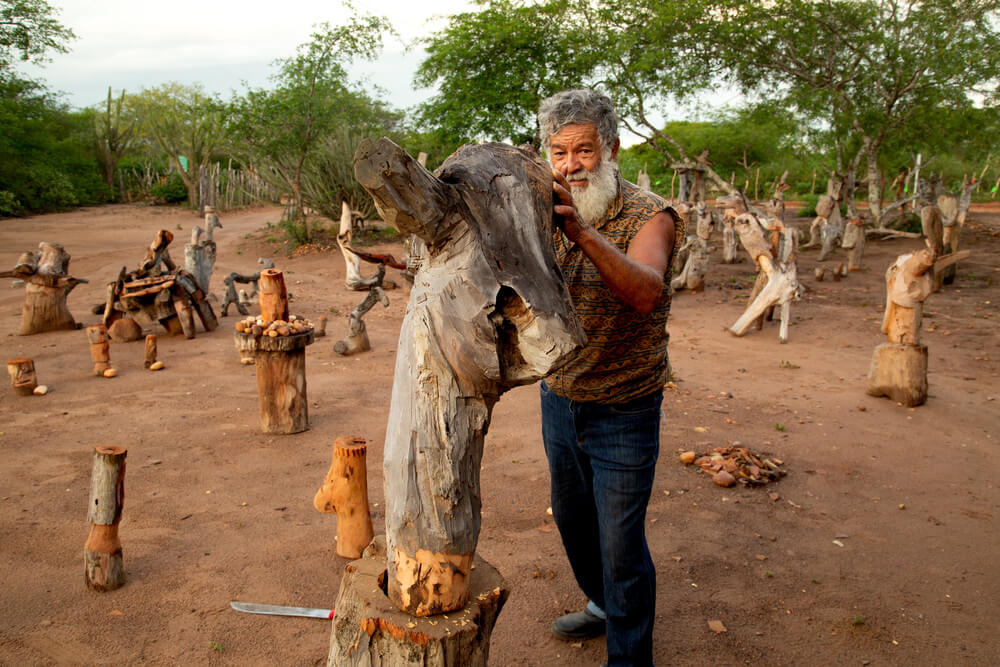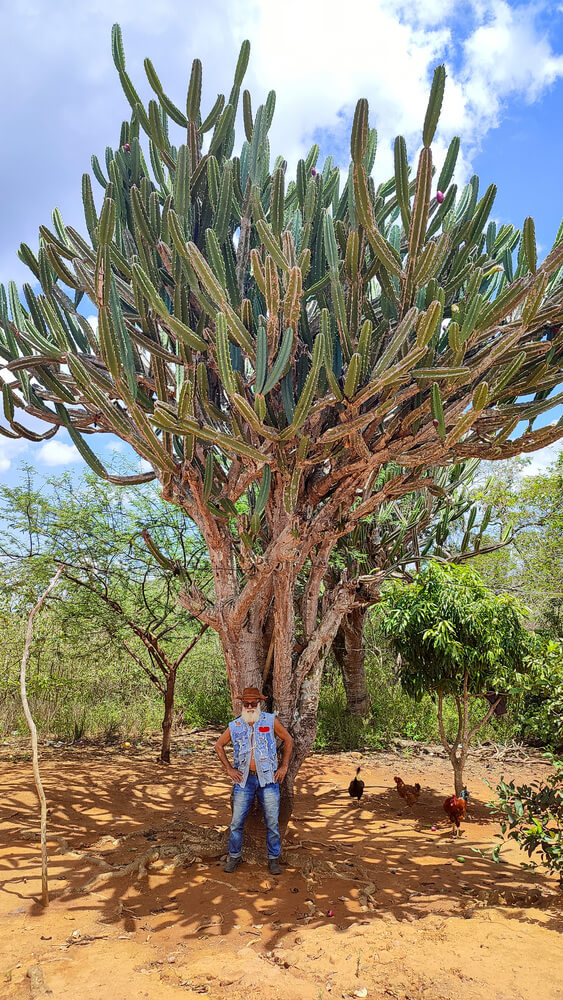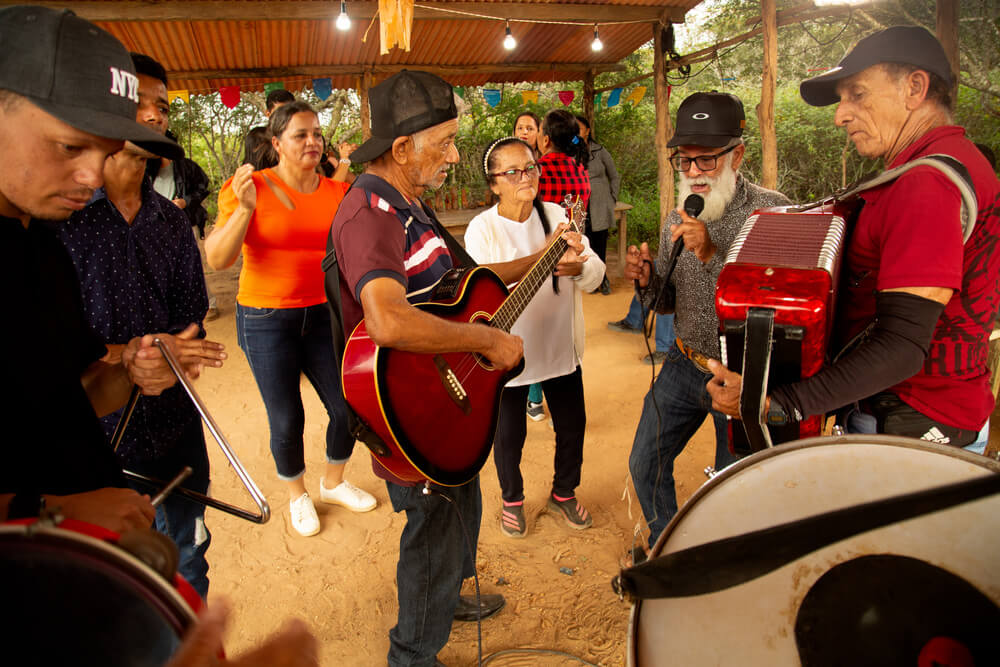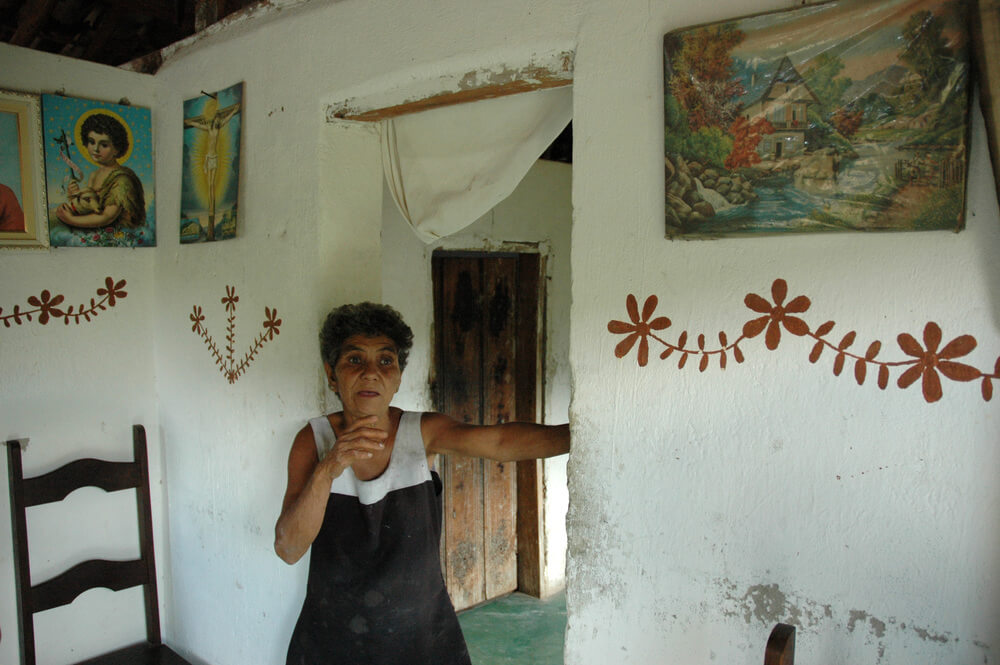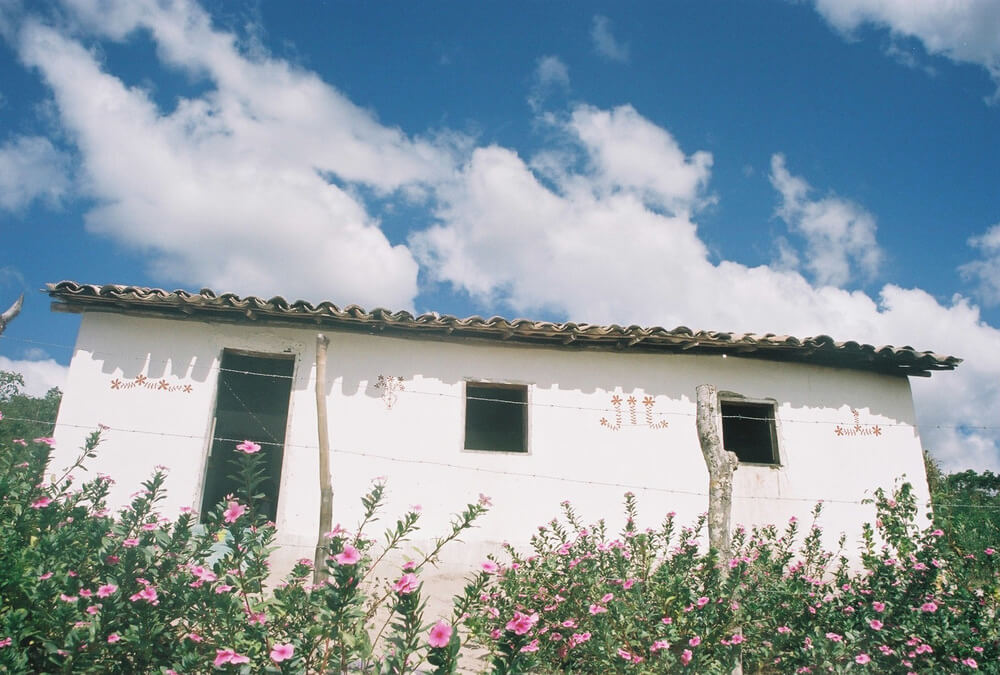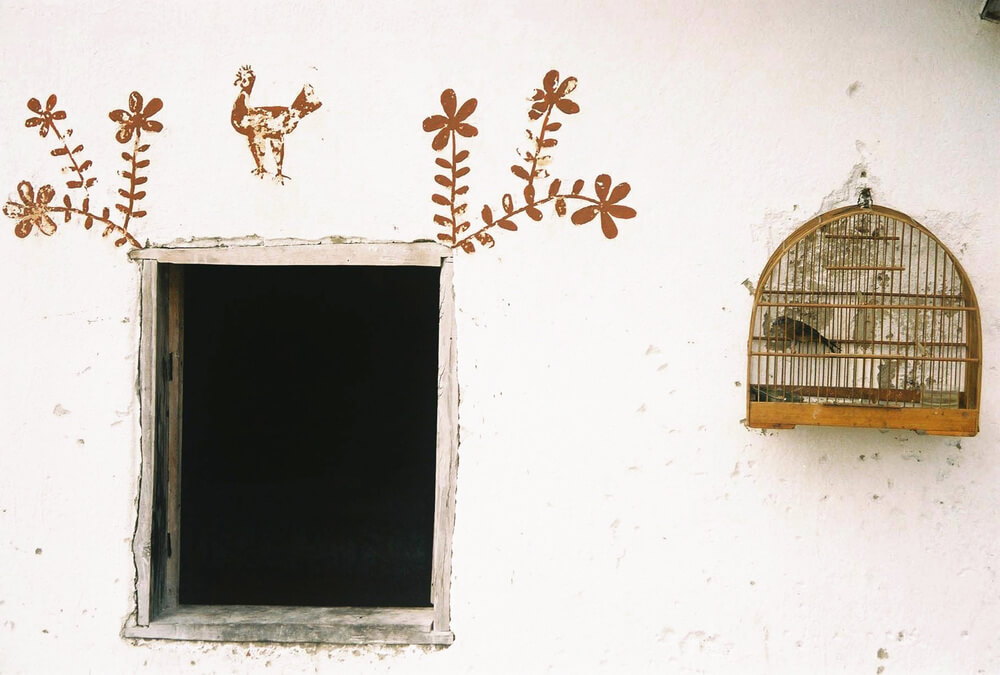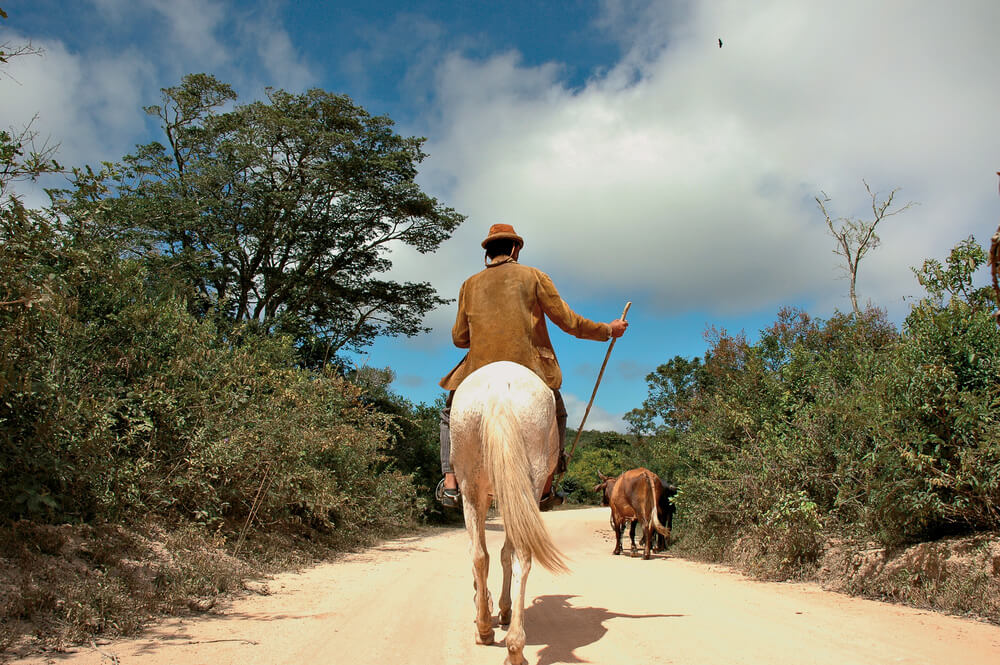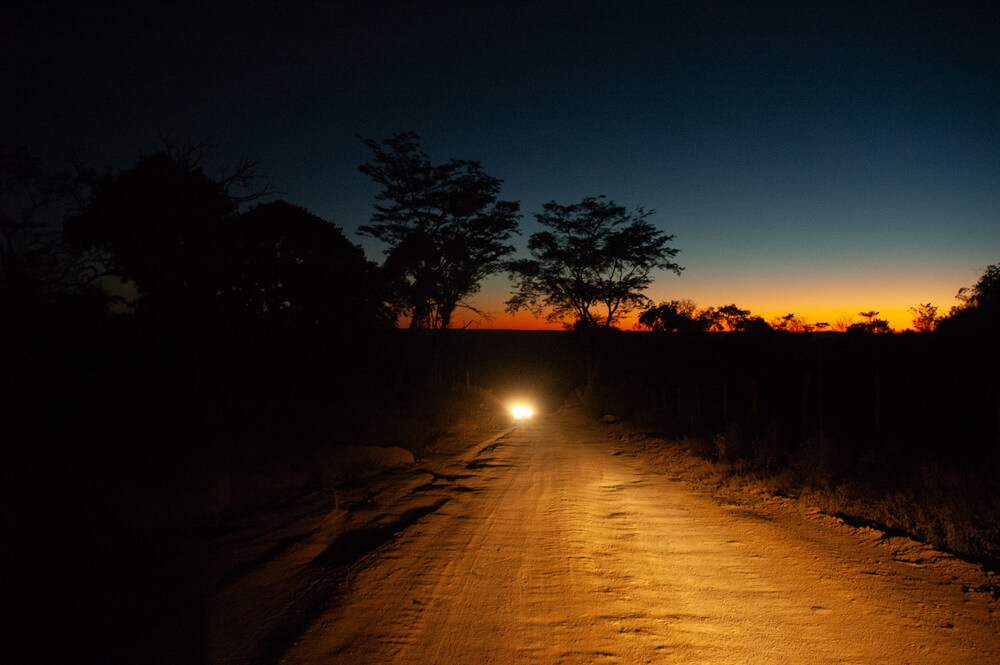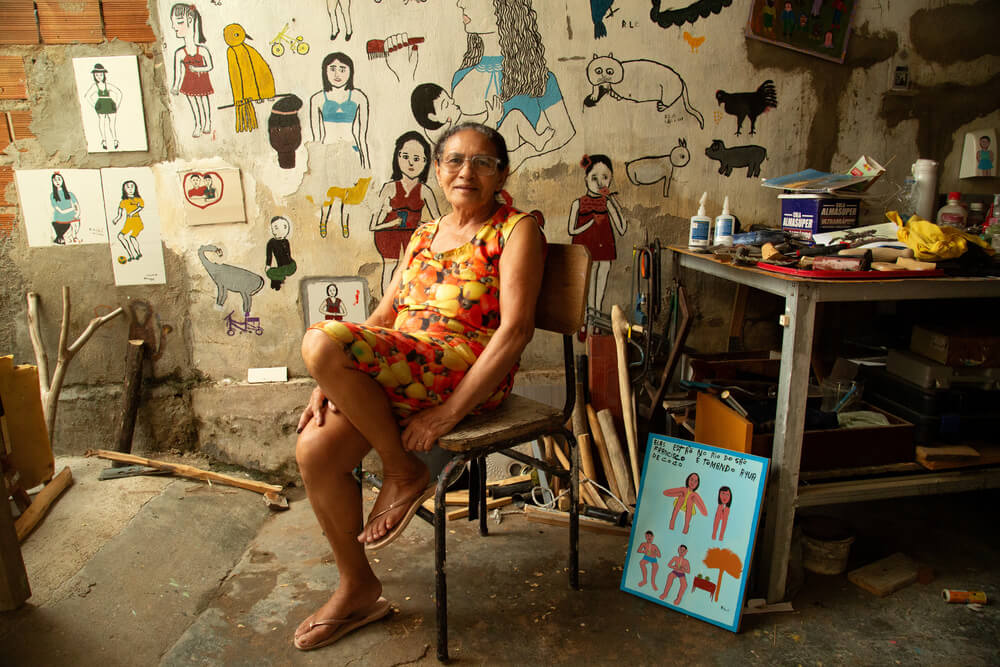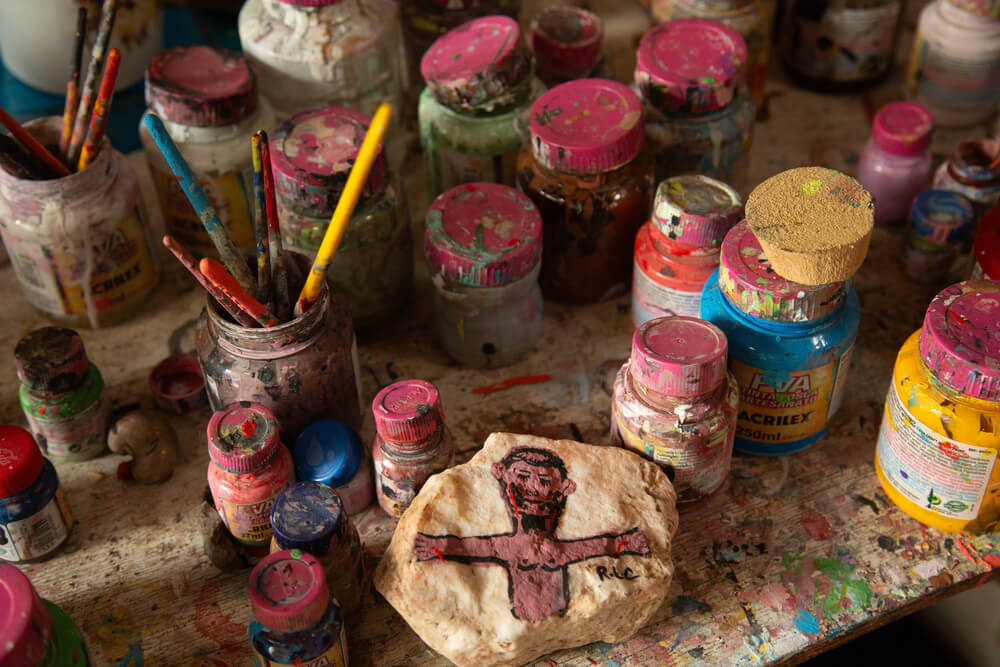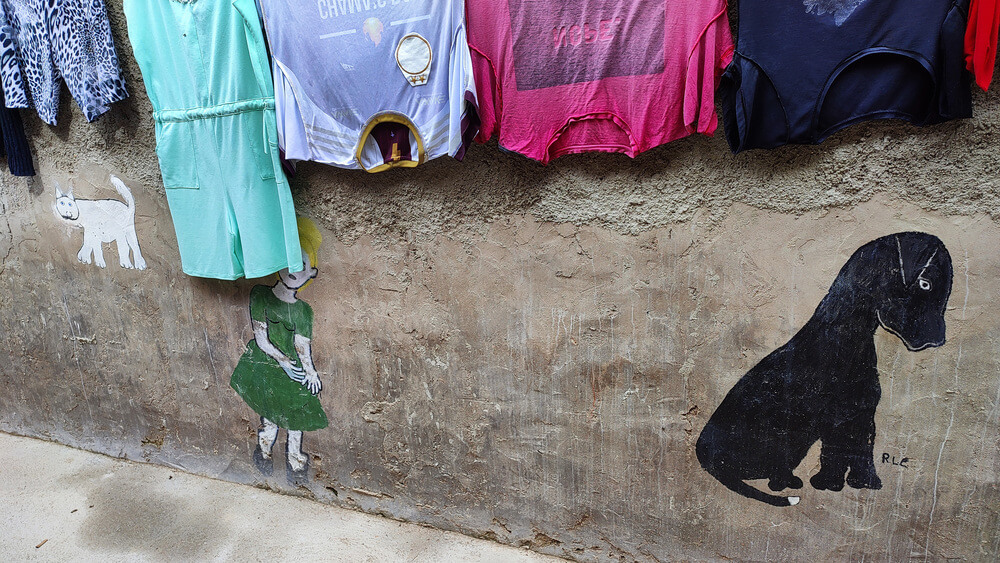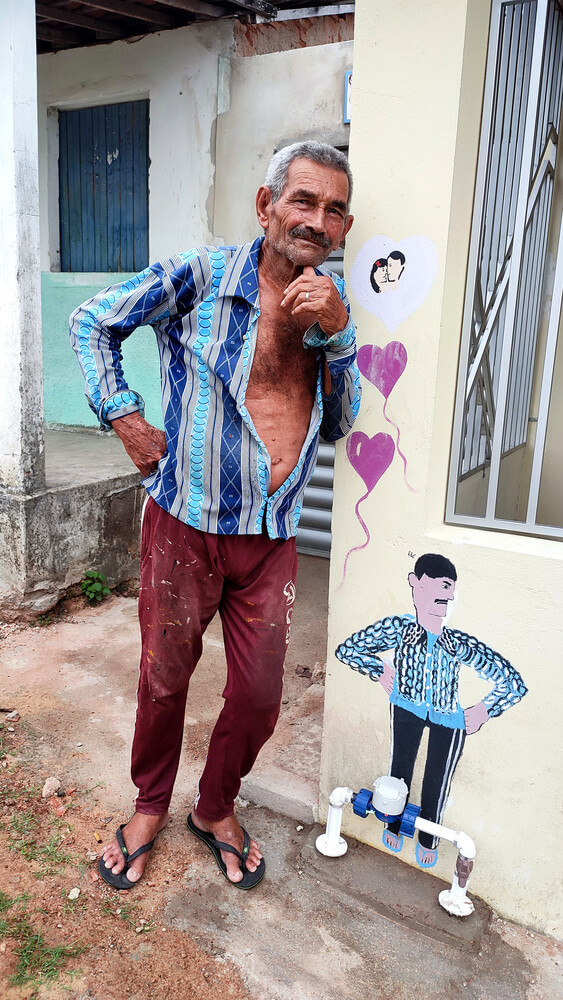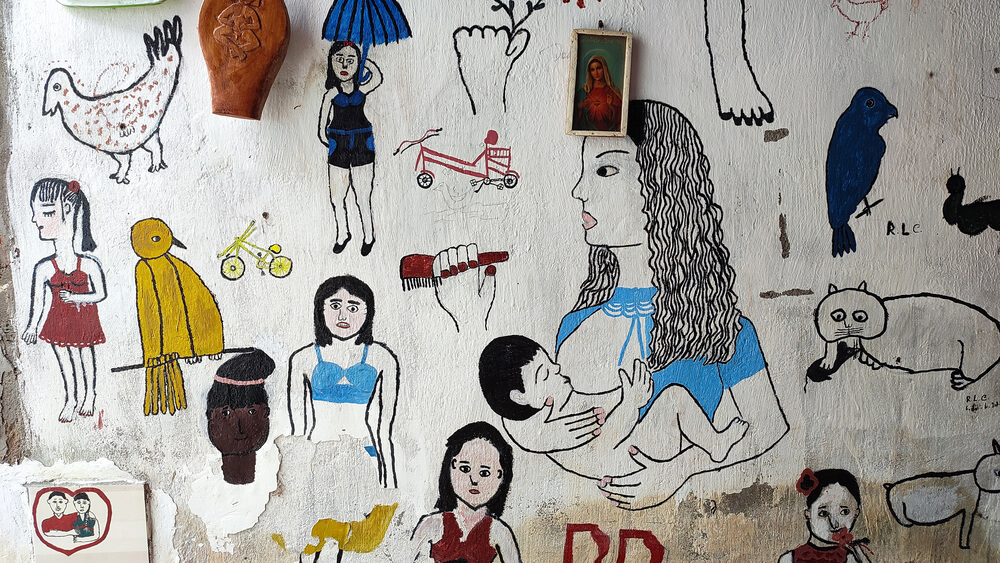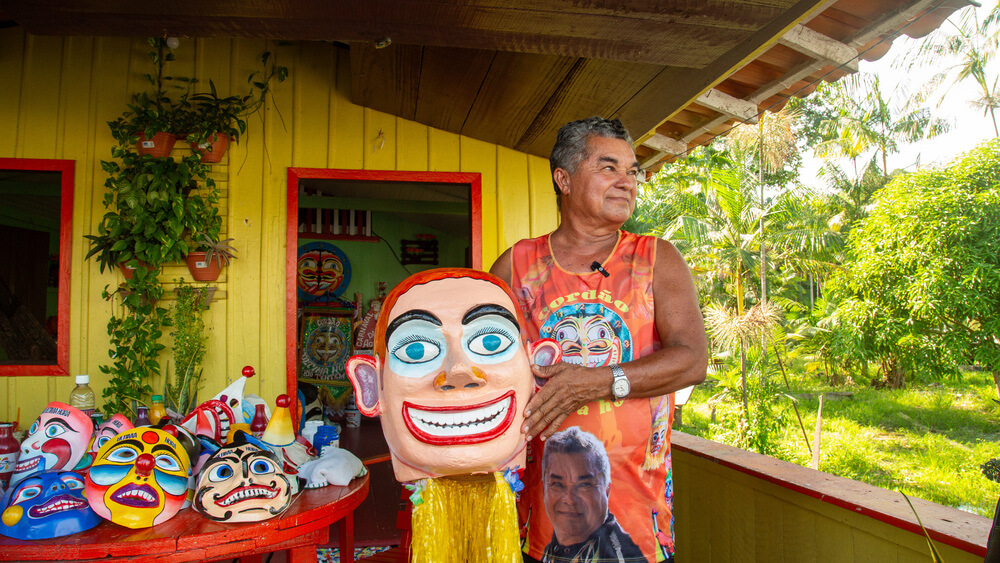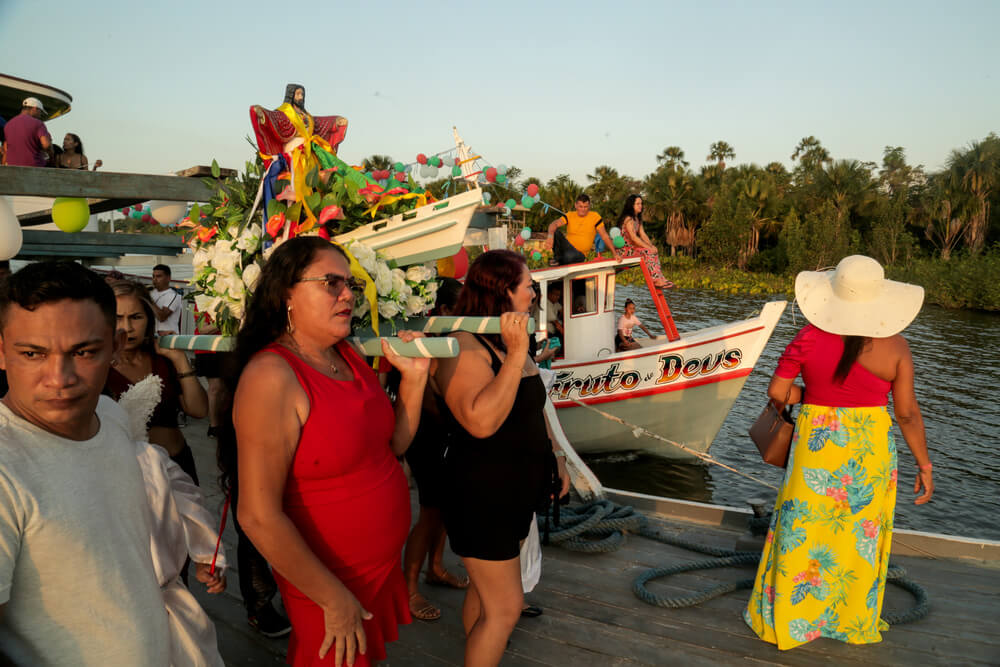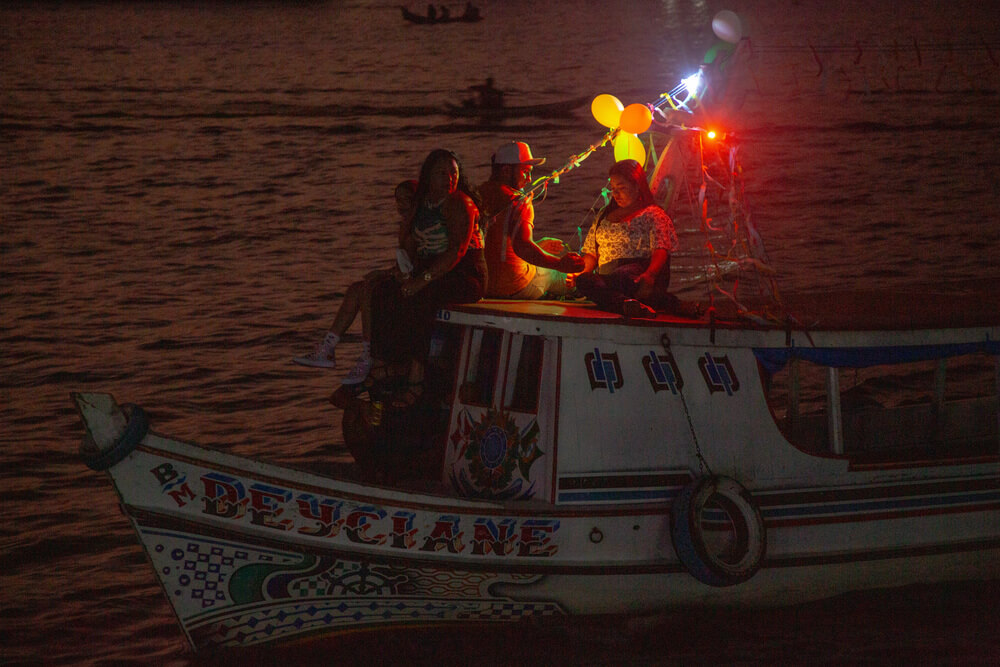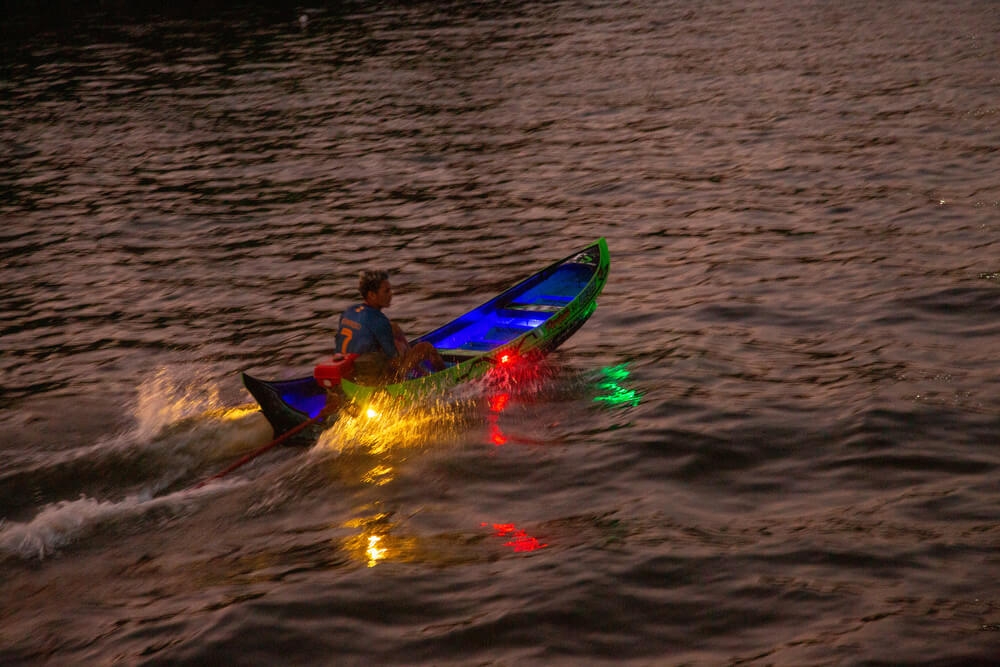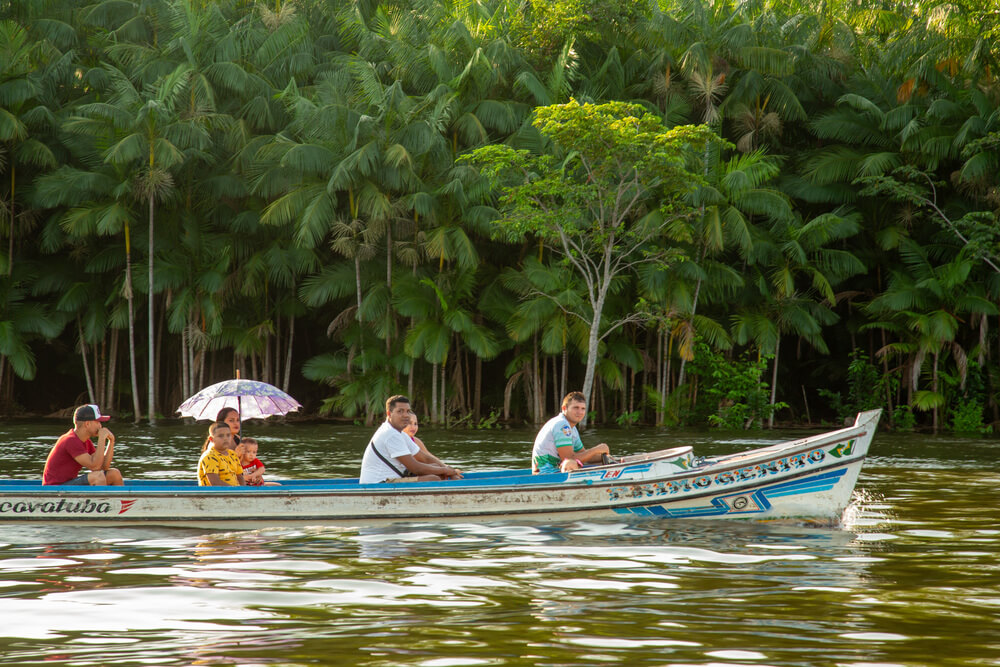Other Poetics: Diving into a Brazil of Art
Lucas Van de Beuque (text and photography)
Art made by popular1 artists is my great passion. While today it’s possible to research artists from all over the country without leaving home, that wasn’t the reality a little over twenty years ago when I started traveling around Brazil. Yet, despite all this ease of communication, without a doubt, visiting an artist in their home or studio is completely different.
Among these immersions, Jose Bezerra has been one of the greatest gifts of recent years. There were many visits, and with each one I learned a little more about his universe and, at the same time, began to comprehend the expansive dimension of his practice, much broader than I had first imagined. Sculptor, poet, musician, musical instrument craftsman, storyteller, and much more, Bezerra does everything with passion, as if it were his last work, show, or performance. He lives in the Catimbau Valley, the second-largest cave painting park in Brazil. A magical and little known place, it lies in a region on the border between the Agreste [transitional zone between Atlantic forest and sertão] and sertão2 regions of Pernambuco, surrounded by spectacular nature. Bezerra’s work transcends borders and has conquered the world, from MASP (Museum of Art of São Paulo) to the Cartier Foundation in France.
Always by car, one of my first research projects was in the Jequitinhonha Valley, Minas Gerais. From Rio de Janeiro the trip is a little over ten hours. It involved almost a dozen trips in partnership with Angela Mascelani (who had been researching there for some time): Campo Alegre, Campo Redondo, Minas Novas, Araçuaí, Itinga, Santana do Araçuaí. Among visiting so many places and artists, meeting Noemisa epitomized for me the contradictions of this region, which, despite being one of the poorest economically, is also one of the richest culturally. She lived in the rural area of Caraí, on a farm only accessible by foot. From a distance, her house loomed like a work of art. Amidst arid nature, Noemisa planted flowers around her and drew these climbing flowers on the facade of her house with free flying birds contrasting with empty cages. Her body was frail, and she hardly spoke. She lived isolated with her sister and nephews in very difficult economic conditions. Yet, her work was strong, vibrant, and determined. Through art, she spoke of love, marriage, parties… in very good company, she flourished.
I’ve also visited Ilha do Ferro and its surroundings several times. On the banks of the São Francisco River, this village is part of the region next to the city of Pão de Açúcar. Bathed by the river, it’s a place that breathes art. A land, above all, of sculptors such as Petrônio, Aberaldo, Leno, Antonio Sandes, Zé Crente, Vavan, Salvinho, Cicero, Dedé, Vieria, Eraldo, and so on. Fernando Rodrigues dos Santos, now deceased, was a pioneer. Here in the midst of these surroundings, I met Roxinha, a painter who lives in the city of Pão de Açúcar. Born Maria José Lisboa da Cruz, she worked in the fields, “broke gravel” in a local quarry, and was a street cleaner for almost two decades. She began painting at 59, as a “joke” between her and her husband. Initially using the house as a canvas, she later moved on to painting on wooden boards, portraying the daily life of contemporary country women with original humor. Whether at the bar, on the river or taking photos for social media, she breaks stereotypes about the role of women in rural settings. Her paintings feature short and humorous commentaries on contemporary life, such as “she’s always showing off on her cell phone,” and also address serious issues like femicide.
On one of my last research trips, in 2024, I had the enormous privilege of meeting Mestre Vital, head of the “Cordon Ultima Hora,” one of the oldest groups in the Cametá Waters Carnival. Five hours from Belém, for this Carnival, the street is the river. Groups parade in their boats along the waters of the Tocantins River. There are more than 30 Carnival groups spread across the river islands and its banks. Mestre Vital and his wife, Dona Ruth, live on one of these islands, on the banks of the Tentem River, a small tributary of the greater Tocantins. He makes masks for his group with unique colors and shapes—pure art. I had already had the opportunity to visit Alter do Chão and its surroundings, Marajó Island, Belém, and Combú Island on other trips. But only by witnessing a glimpse of daily life on the Tentem River did I come to understand Amazonian riverside life. Everything happens on and around the river. Even Carnival.
This short essay brings together four artists who inspire me to continue diving into the poetic universe of art that is rooted in Brazilian culture and widespread throughout the country, a continental universe of so much diversity.
***
Lucas Van de Beuque is the executive director of the Pontal Museum. Together with Angela Mascelani, he created the new Pontal Museum, which opened in 2021. He is a professor at Candido Mendes in their MBA program in Museum Management. A photographer, curator, and filmmaker, his research focuses on artists and masters of popular culture. He co-directed the films Juazeiro do Norte, Ceará: arte fé e festa (2014), Artistas Cazumbas (2019) and Zé Bezerra, Artista (2024). He was co-curator for the exhibitions “Festas, sambas e outros Carnavais” (Sesc Casa Verde, SP, 2023 and CCBA, PA, 2024) featuring works by Mestre Vital, “Roxinha uma vida de novela” (Pontal Museum, 2023) and “José Bezerra e os artistas do vale do Catimbau” (Pontal Museum, 2024). He was also the photographer for the book Caminhos da Arte Popular: o Vale do Jequitinhonha (2009) by Angela Mascelani.
1 T.N. “Popular” in Brazilian Portuguese while similarly referring to the general public or majority opinions as it does in English, more avidly embraces meanings of being “of the people” and “the working class” together with their rich sociocultural traditions, themes, and festivals. “Popular” art is artwork produced by these artists and while it may include works that might have previously been termed “folk art,” “outsider art” or “craft” in English, encompasses a much broader understanding of creative artmaking, drawing on everyday life, cultural themes, materials, and traditions. For a discussion on the term popular art see the essay by Angela Mascelani in the 6th issue of Revista Mesa “Hidden Lives” https://institutomesa.org/revistamesa/edicoes/6/angela-mascelani/?lang=en (Accessed September 2025)
2 T.N. Sertão refers to the semiarid region in northeastern Brazil, comprising parts of the states of Alagoas, Bahia, Pernambuco, Paraíba, Rio Grande do Norte, Ceará, Maranhão, Piauí, Sergipe, and Minas Gerais. The word also refers in general to Brazil’s hinterlands similar to the Australian outback.

